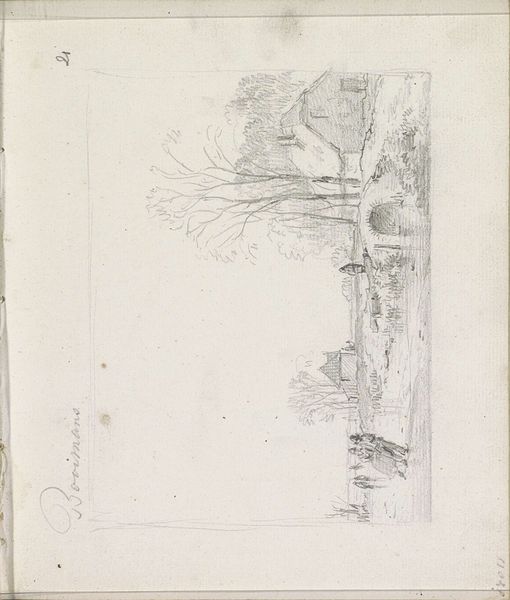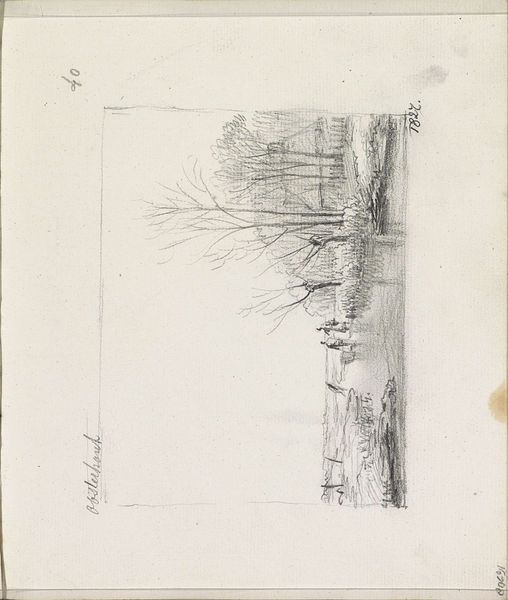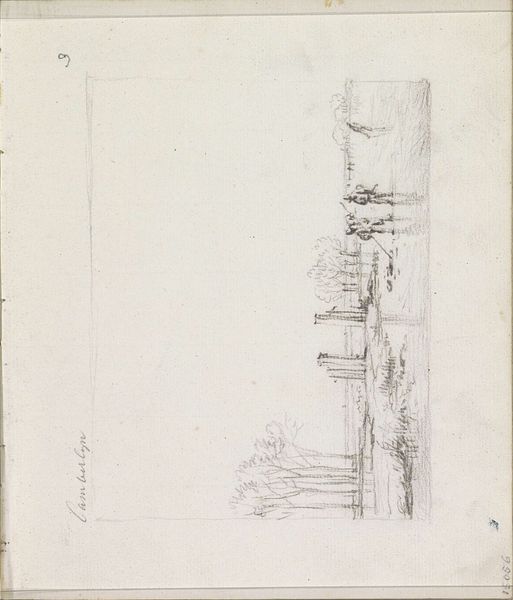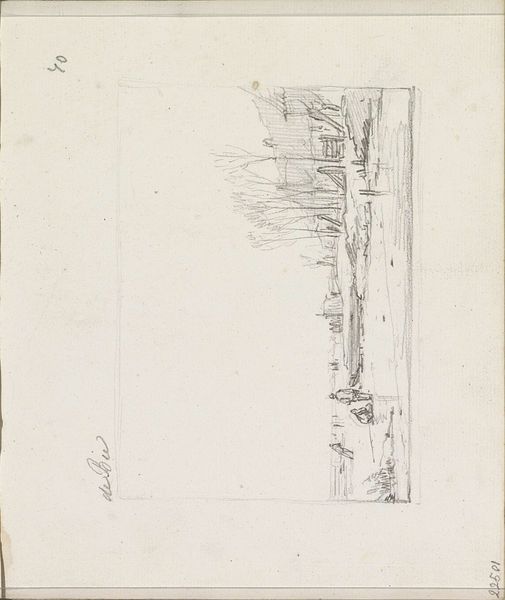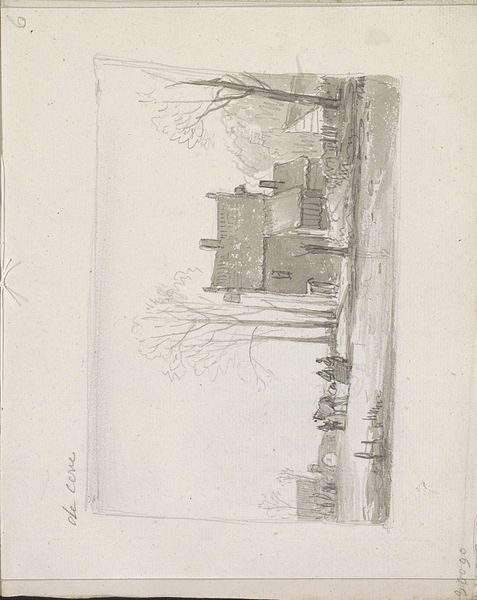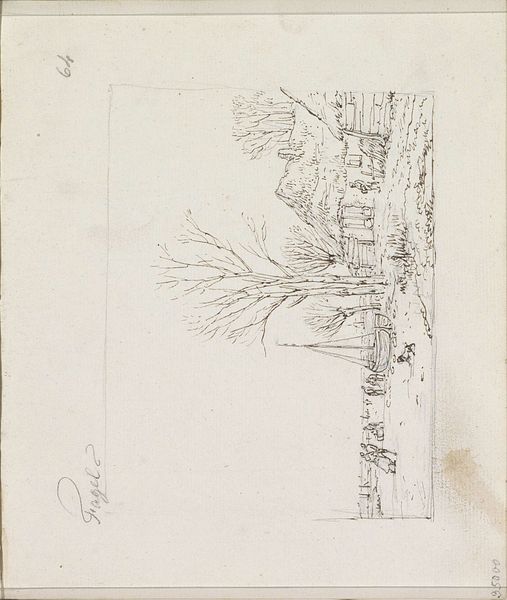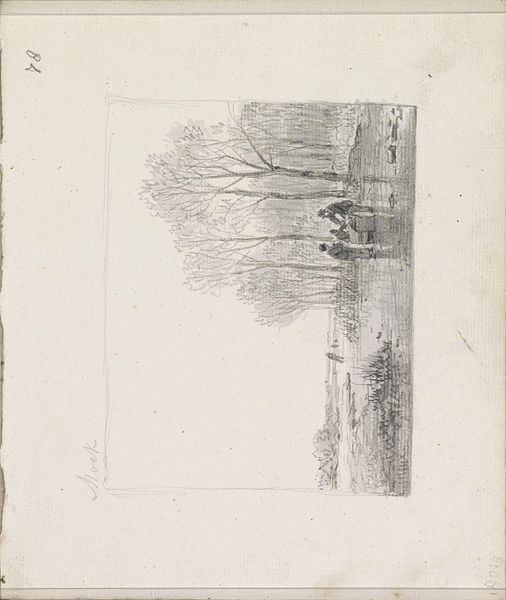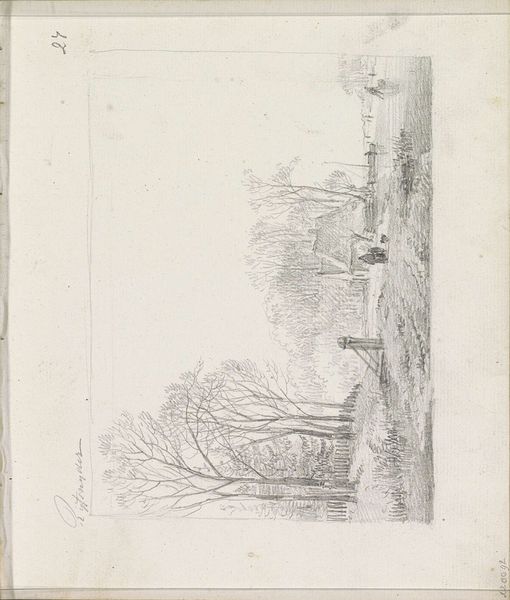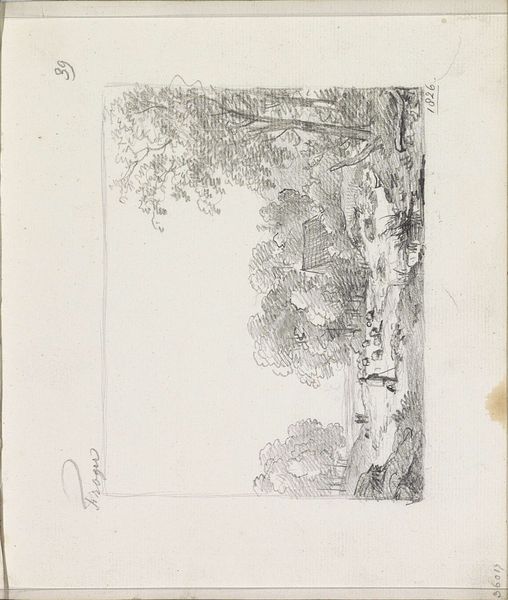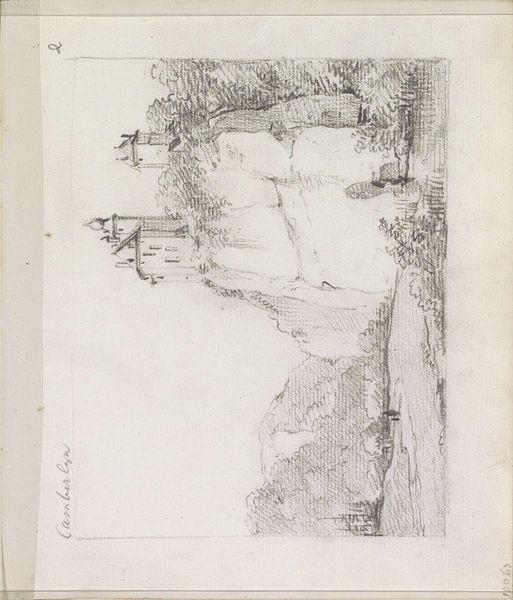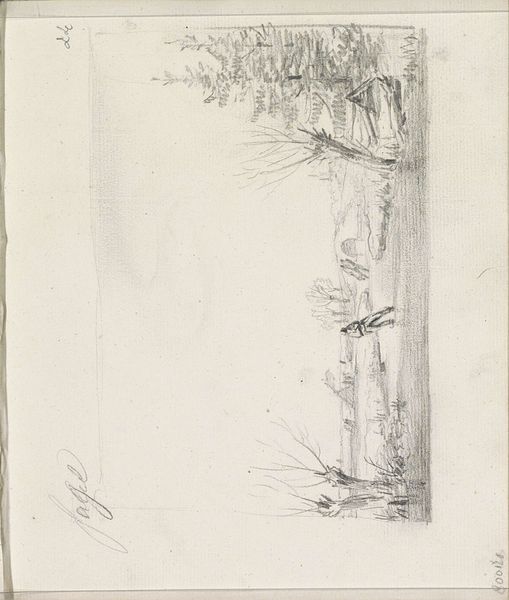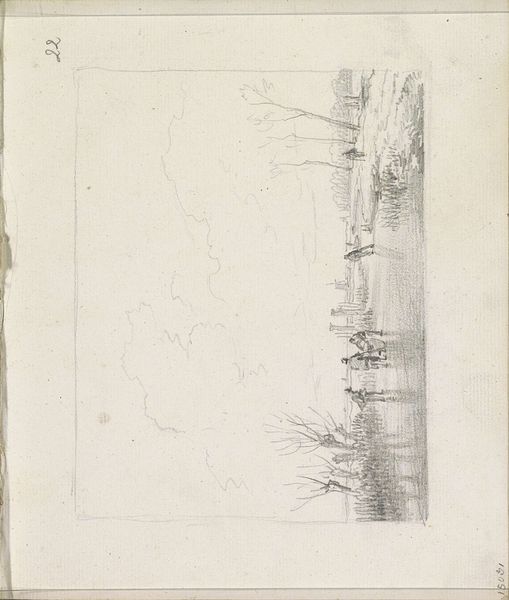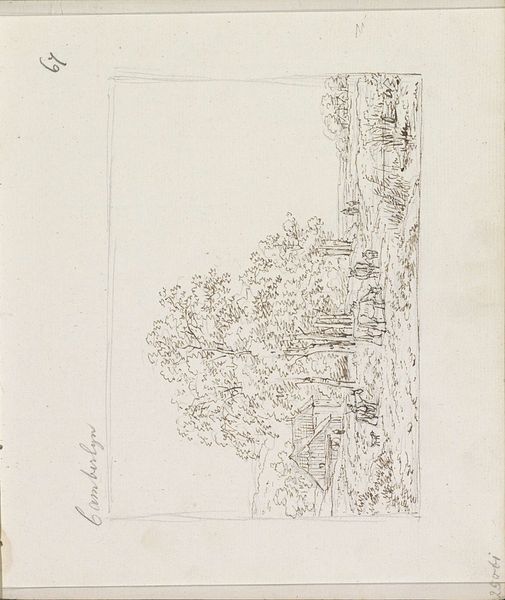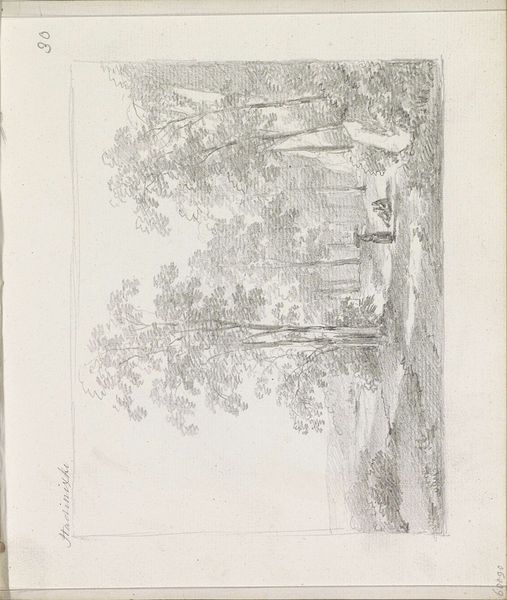
Schaatsers op een bevroren vaart aan de rand van een dorp c. 1825 - 1829
0:00
0:00
drawing, pencil
#
drawing
#
dutch-golden-age
#
pencil sketch
#
landscape
#
romanticism
#
pencil
Copyright: Rijks Museum: Open Domain
Curator: This drawing is by Andreas Schelfhout, titled "Skaters on a Frozen Canal on the Edge of a Village," dating from around 1825 to 1829. The Rijksmuseum houses it. Editor: My initial response is of sparseness and quietude. The skeletal trees, the soft pencil strokes – it feels like a memory rather than a depiction. Curator: It is a delicate rendering of a typically Dutch winter scene. Look closely at how Schelfhout uses line to create depth; the varying pressures define foreground and background. The texture he creates in the ice is especially compelling. Editor: I see an underlying theme of community and survival during winter's stark embrace, if you will. Figures huddled together skating – an act of practicality, moving from place to place, but also clearly leisure and enjoyment despite hardship. Is there a celebration here, I wonder, masked within a working landscape? Curator: Perhaps. But structurally, note how the verticality of the trees is juxtaposed against the horizontal stretch of the frozen canal. The artist has also skillfully constructed two distinct spatial registers – the high, dominant village against the active foreground scene below. The light etches everything distinctly in tones that complement this divide and yet maintain pictorial harmony. Editor: That is well observed. Consider the bare trees, though; their upward reaching limbs could symbolize aspiration or the cyclical nature of life – dormancy followed by eventual rebirth, certainly speaking of the Romantic leanings so in tune in the Netherlands during this era. Also, the depiction of figures, somewhat generic, suggests a universal humanity. Curator: While I agree with the Romantic elements you describe, the reduction to the most vital compositional forms is also striking: horizontal lines meet a carefully designed vertical organization, demonstrating pictorial rigor beyond mere sentimental naturalism. Editor: Well, together, it is perhaps about something very human, as are most cultural symbols – an equilibrium that depicts rigor as a response to our place, as part of life that makes everything better in community as time moves on. Curator: An intriguing blend of form and feeling, captured with remarkable subtlety. Editor: Indeed, food for thought, rendered exquisitely in pencil.
Comments
No comments
Be the first to comment and join the conversation on the ultimate creative platform.
